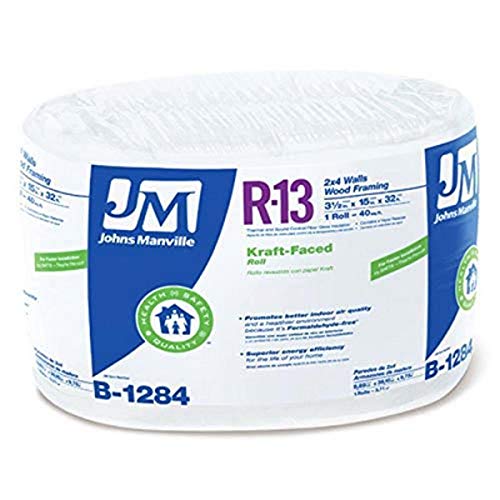Welcome to the world of shipping container homes, where innovative design meets sustainability. If you’ve ever dreamed of living in a unique and eco-friendly space, a shipping container home might be the perfect solution for you.
These homes are not only affordable and environmentally friendly but also incredibly customizable and can be designed to suit any style and need.
Now, let’s dive into the exciting topic of shipping container homes in Connecticut. As a resident of this beautiful state, you have the advantage of exploring the endless possibilities of container home living while being surrounded by stunning landscapes and urban hubs.
In this article, we’ll guide you through the process of building your own container home in Connecticut, highlighting the important factors you need to consider.
Understanding building regulations and permits is crucial when it comes to constructing a shipping container home in Connecticut.
The state has specific codes and guidelines that must be followed to ensure the safety and compliance of your home.
We’ll discuss the importance of familiarizing yourself with these regulations and obtaining the necessary permits before embarking on your container home journey.
Table of Contents
Building Regulations and Permits for Shipping Container Homes in Connecticut
A. Overview of the Necessary Permits and Regulations
- Understand the zoning regulations in different areas of Connecticut
In Connecticut, zoning regulations can vary significantly between different areas. Before starting any construction on a shipping container home, it is crucial to understand and comply with the specific zoning regulations of the chosen location. This ensures that the home is built in an appropriate and legally permissible area.
- Obtain building permits for the construction of shipping container homes
Building permits are mandatory for constructing shipping container homes in Connecticut. These permits ensure that the construction meets the necessary safety standards and regulations.
It is essential to submit detailed architectural plans to the local building department and obtain the required permits before starting the construction process.
- Considerations for electrical and plumbing permits
In addition to building permits, consider obtaining the necessary electrical and plumbing permits for the shipping container home.
These permits ensure that the electrical and plumbing systems meet the required standards and regulations, providing a safe and functional living space.
Read More on Shipping Container Homes in Nevada: Innovative Architecture
B. Step-by-step Guide on Navigating the Permit Process for Shipping Container Homes in Connecticut
- Researching local building codes and regulations
Start by conducting thorough research on the local building codes and regulations specific to the area where you plan to build your shipping container home.
Read More on Shipping Container Home In Louisiana: How To Build OneUnderstanding the applicable rules helps you navigate the permit process more efficiently and avoids potential violations.
- Contacting local authorities for guidance
Reach out to the local building department or municipal authorities to seek guidance on the specific requirements and processes for obtaining permits for shipping container homes.
They can provide valuable information and answer any questions you may have regarding the permit process.
- Hiring professionals or consultants for assistance
If you find the permit process overwhelming or confusing, consider hiring professionals or consultants who specialize in building permits for shipping container homes in Connecticut.
These experts can guide you through the process, ensure compliance with regulations, and help expedite the permit approval.
Read More on Shipping Container Home In Louisiana: How To Build One
Construction and Design Considerations for Shipping Container Homes in Connecticut
A. Advantages and Disadvantages of Using Shipping Containers as Building Materials
- Durability and structural integrity of shipping containers: Shipping containers are built to withstand harsh conditions and can provide a strong foundation for a home.
- Design flexibility and customization options: With the ability to stack and arrange containers in various configurations, there are endless design possibilities for creating a unique and modern home.
- Considerations for insulation and weatherproofing: Due to the steel construction of containers, insulation and weatherproofing are essential to ensure comfort and protection against the Connecticut climate.
B. Specific Design Considerations for Shipping Container Homes in Connecticut
- Adapting the design to the local climate: Connecticut experiences four distinct seasons, so it is crucial to consider factors such as insulation, heating, and cooling systems to ensure the home is comfortable year-round.
- Ensuring proper ventilation and airflow: Adequate ventilation is necessary to prevent humidity buildup and maintain a healthy indoor environment.
- Integrating sustainable and eco-friendly features: Connecticut values sustainability, so incorporating renewable energy systems and utilizing recycled materials can help reduce the home’s carbon footprint.
Read More on Shipping Container Homes in New Mexico: Expert Look
Cost and Budgeting for Shipping Container Homes in Connecticut





When considering building a shipping container home in Connecticut, one of the most important factors to consider is the cost and budget. Several elements can impact the overall cost of your shipping container home project.
A. Factors Affecting the Cost of Shipping Container Homes in Connecticut
- Size, layout, and complexity of the design: The size and layout of your shipping container home will significantly impact the cost. A larger home with complex features and design elements will generally require more containers and additional construction work, leading to higher expenses.
- Quality and condition of the shipping containers: The quality and condition of the shipping containers you choose for your home can vary. Newer containers or those in better condition may come at a higher price tag but offer better durability and lifespan.
- Additional features and finishes: Adding extra features and finishes, such as custom windows, doors, plumbing, electrical systems, and high-end finishes, will increase the overall cost of your shipping container home.
Read More on Ultimate Truth On Is It Cheaper To Build A Container Home?
B. Estimating the Overall Cost and Creating a Budget for Shipping Container Homes in Connecticut
- Researching average prices of shipping containers and local construction costs: Before starting your project, it’s crucial to research and gather information on the average prices of shipping containers in Connecticut and the current local construction costs.
But generally, the national average of used 20 foot shipping containers is $1,500 to $2,500. And for a 40 foot used shipping container is $2,500 to $4,500.
Note that this is highly dependent on the age and condition of the used shipping container. Newer containers are a better option, but out of range in terms of price for many. This will give you a baseline estimate to work with. - Accounting for permits, professional services, and labor expenses: Don’t forget to include the costs of obtaining necessary permits, hiring professional services such as architects or contractors, and labor expenses for the construction phase. These additional expenses can quickly add up and impact your budget.
- Planning for contingencies and unexpected costs: It’s essential to allocate a portion of your budget for contingencies and unexpected costs that may arise during the construction process. Unforeseen challenges or changes to the initial plan can impact both the timeline and budget. And so it’s wise to be prepared.
By considering these factors and creating a comprehensive budget, you can ensure a smooth and financially viable shipping container home project in Connecticut.
Sustainable and Eco-Friendly Features of Shipping Container Homes in Connecticut
When it comes to building homes, sustainability and eco-friendliness are becoming increasingly important considerations. Shipping container homes in Connecticut offer a unique opportunity to incorporate these features seamlessly.
By incorporating sustainable design options, these homes can contribute to a greener future. They do this while providing a comfortable and stylish living space.
A. Importance of Incorporating Sustainable Features Into Shipping Container Homes
Shipping container homes in Connecticut have the potential to significantly reduce the carbon footprint of traditional housing.
By incorporating sustainable features, homeowners can further enhance the environmental benefits of these homes.
From reducing energy consumption to conserving water resources, sustainable features play a crucial role in making these homes eco-friendly.
B. Sustainable Design Options for Shipping Container Homes in Connecticut
1. Installing solar panels and harnessing renewable energy sources:
- Utilizing solar panels can help shipping container homes in Connecticut generate clean and renewable energy. This not only reduces reliance on conventional power sources but also lowers electricity bills over time.
Read More on Easy Definition Of A Solar Inverter, And Its Working Principle
2. Maximizing natural lighting and ventilation:
- Strategic placement of windows and skylights allows for maximum natural light, reducing the need for artificial lighting during the day. This can create a cheerful ambiance inside the home while minimizing energy consumption.
- Natural ventilation systems, such as vents and louvers, can be incorporated into shipping container homes in Connecticut to promote fresh airflow and reduce the need for air conditioning or heating.
3. Implementing water-saving features and rainwater harvesting systems:
- Low-flow faucets, showerheads, and toilets can significantly reduce water consumption in shipping container homes. This not only conserves a precious resource but also lowers water bills.
- Rainwater harvesting systems can collect and store rainwater for various non-potable uses, such as watering gardens or flushing toilets, further reducing reliance on municipal water supplies.
Read More on How To Do Solar System Sizing For Your Home
Finding Suitable Land or Lots for Shipping Container Homes in Connecticut
Research and Considerations for Finding Suitable Land in Connecticut
When looking to build a shipping container home in Connecticut, it is crucial to conduct thorough research and consider various factors before settling on a piece of land.
- Understanding local zoning and land-use regulations: Connecticut, like any other state, has specific zoning and land-use regulations that dictate where and how homes can be constructed. It is essential to research and understand these regulations to ensure compliance and avoid any legal issues in the future.
- Identifying available land or lots for sale: Begin your search by exploring different resources such as real estate websites, local classifieds, and contacting real estate agents who specialize in land sales. Look for listings that mention vacant lots or land suitable for residential development.
- Evaluating the suitability of the land for building a shipping container home: Besides considering the location and accessibility of the land, it is important to assess its suitability for a shipping container home. Factors to consider include the size of the lot, its topography, soil conditions, and any potential environmental concerns.
Read More on 15 Best Container Homes You Can Own Under $100K
Engaging With Real Estate Agents and Professionals Specialized in Land Acquisition for Shipping Container Homes
One of the best ways to find suitable land for shipping container homes in Connecticut is to work with real estate agents and professionals who specialize in land acquisition for this type of housing.
- Real estate agents: Seek out agents who have experience and knowledge in the field of sustainable and alternative housing. They can guide you through the process, provide information on available land, and assist in negotiations.
- Land acquisition professionals: These professionals specialize in helping individuals find and acquire suitable land for specific housing needs. They may have connections within the industry and access to off-market listings that can be ideal for building shipping container homes.
By engaging with these experts, you can gain valuable insights, access to a wider range of land options, and have peace of mind knowing that they are well-versed in the unique considerations associated with shipping container homes.
Financing Options and Loans for Shipping Container Homes in Connecticut
When it comes to financing your shipping container home in Connecticut, there are several options available to you.
Whether you’re looking for a traditional mortgage loan or exploring alternative routes, it’s important to understand the various choices and find the one that suits your needs.
A. Overview of Financing Options for Shipping Container Homes
1. Traditional mortgage loans:
If you prefer a conventional approach, you can opt for a traditional mortgage loan from a bank or financial institution. This option might require you to provide a down payment and adhere to standard credit and income requirements.
2. Personal loans and lines of credit:
If you’re unable to secure a mortgage loan or prefer flexibility, personal loans or lines of credit might be a suitable choice. These options generally have higher interest rates but can offer greater freedom in terms of repayment options.
3. Construction loans and financing programs:
For those embarking on a new construction project, specifically building a shipping container home, construction loans or specialized financing programs are worth considering. These loans are designed to encompass the unique requirements of the construction process.
Read More on How To Finance A Container Home: All You’ll Need
B. Researching and Comparing Financing Options Available in Connecticut
1. Identifying lenders specialized in alternative home constructions:
Conduct thorough research to identify lenders that specialize in financing alternative home constructions such as shipping container homes. Consult experts in the field or search online for lenders who have experience in this area.
2. Understanding the application process and requirements:
Each financing option will have its own application process and requirements. Take the time to understand the application process, gather the necessary documentation, and ensure you meet the eligibility criteria before proceeding.
3. Evaluating interest rates and repayment terms:
Interest rates and repayment terms can vary significantly among different financing options. Compare and evaluate these aspects to determine which option aligns best with your financial situation and long-term goals.
Insulation and Weatherproofing for Shipping Container Homes in Connecticut
Proper insulation and weatherproofing are crucial factors to consider when building shipping container homes in Connecticut.
The state experiences diverse weather conditions, including cold winters and hot summers, making it essential to create a comfortable and energy-efficient living space.
A. Importance of Proper Insulation and Weatherproofing for the Connecticut Climate
Connecticut’s climate varies throughout the year, with average temperatures ranging from the high 20s°F in winter to the low 80s°F in summer.
Without adequate insulation and weatherproofing, shipping container homes can become unbearably cold during winter and excessively hot during summer.
Proper insulation and weatherproofing help maintain comfortable indoor temperatures, reduce energy consumption, and save on heating and cooling costs.
Read More on Amazing Cost To Build A Shipping Container Home
B. Types of Insulation Suitable for Shipping Container Homes
There are several insulation options available for shipping container homes in Connecticut. Here are a few effective choices:
- Spray foam insulation: This type of insulation is sprayed into the container’s walls, ceilings, and floors, expanding to fill all gaps and crevices. Spray foam provides excellent insulation and acts as an effective vapor barrier.
- Fiberglass insulation: Fiberglass insulation is widely used in construction and offers good thermal resistance. It’s available in batts or rolls that can be installed between the container’s wall studs.
- Rigid foam insulation: Rigid foam boards are highly effective in insulating shipping container homes. They provide a continuous insulation layer and can be installed on the interior or exterior walls of the container.
| Image | Product Title | Features | Price |
|---|---|---|---|
 | Buy on Amazon | ||
 | Buy on Amazon | ||
 | Buy on Amazon |
Read More on 5 Amazing Ways To Insulate A Shipping Container Home
C. Tips and Considerations for Weatherproofing Shipping Container Homes in Connecticut
When weatherproofing a shipping container home in Connecticut, it’s essential to pay attention to the following aspects:
- Adequate sealing and sealing materials: Use weatherstripping, silicone caulking, or specialized sealants to seal any gaps or openings in the container structure. This prevents drafts, moisture infiltration, and heat loss.
- Proper installation of windows and doors: Choose energy-efficient windows and doors with good insulation properties. Ensure they are installed correctly to prevent air leaks and maintain optimal indoor temperatures.
- Ventilation systems and moisture control: Proper ventilation is crucial to prevent condensation and mold growth. Install vents, fans, and dehumidifiers to control moisture levels inside the container home.
By addressing insulation and weatherproofing, shipping container homes in Connecticut can provide comfortable living spaces that withstand the state’s climate extremes.
Consider consulting with a professional contractor experienced in container home construction to ensure optimal insulation and weatherproofing.
Read More on Effective Ways To Stop Condensation In A Container Home
Utility Connections and Off-Grid Options for Shipping Container Homes in Connecticut
When it comes to utility connections, shipping container homes in Connecticut have various options to ensure a comfortable and sustainable living environment.
Whether you prefer to connect to municipal services or opt for off-grid alternatives, there are several considerations to keep in mind.
A. Overview of Utility Connections for Shipping Container Homes
1. Connecting to municipal water and sewer systems
In a word, one common option for shipping container homes in Connecticut is to connect to municipal water and sewer systems. This allows homeowners to have access to a reliable water supply and proper waste management.
However, it’s important to consult with local authorities and utility providers to understand the requirements and regulations.
Read More on Easy Explanation To What Is A Plumbing Process
2. Hooking up to electrical grids
To power your shipping container home, connecting to the electrical grid is a convenient choice. This enables you to enjoy all the modern amenities without worrying about power outages or alternative power sources.
It is crucial to work with a licensed electrician to ensure safe and compliant electrical connections.
3. Utilizing propane or other off-grid energy sources
For those seeking a more off-grid lifestyle, utilizing alternative energy sources such as propane can be a viable option.
Propane is clean-burning and can power various appliances, including stoves, water heaters, and even generators. Other off-grid energy sources, such as wind turbines or hydroelectric systems, can also be explored for a greener energy solution.
B. Exploring Off-grid Options for Shipping Container Homes in Connecticut
1. Installing solar panels and battery storage systems
Solar panels are an excellent choice for off-grid shipping container homes in Connecticut. They harness the abundant sunlight and convert it into electricity, reducing reliance on traditional power sources.
By combining solar panels with battery storage systems, homeowners can store excess energy and have a reliable power supply even during cloudy days or at night.
2. Utilizing rainwater harvesting and filtration systems
Doing proper research to incorporate rainwater harvesting and filtration systems is an eco-friendly way to ensure a sustainable water supply.
By collecting rainwater from the roof, it can be stored in tanks and filtered for various uses, such as irrigation, flushing toilets, and even drinking with proper filtration methods. This reduces dependence on municipal water and helps conserve this precious resource.
Moreover, keep in mind that some jurisdictions do not allow that you harvest rain water without explicit permission from the county or local government.
And so absurd as this appears to be, many potential homeowners find themselves in legal trouble by harvesting rainwater without permission from the concerned authorities.
3. Considering composting toilets and alternative wastewater management solutions
In general, for those aiming to minimize their environmental impact, composting toilets are a great option. These innovative toilets turn waste into compost that can be safely used as fertilizer.
Additionally, alternative wastewater management systems, such as greywater recycling, can be implemented to further reduce water waste and promote sustainable practices.
When exploring off-grid options for shipping container homes in Connecticut, it’s essential to consult with professionals experienced in alternative energy sources, water management, and waste solutions.
They can provide guidance on the best systems and technologies that suit your needs and the local environment.
Read More on How To Best Build A Shipping Container Home From Scratch
Potential Challenges and Common Misconceptions Regarding Shipping Container Homes in Connecticut
A. Addressing Common Misconceptions About Shipping Container Homes
When it comes to shipping container homes in Connecticut, there are several misconceptions that need to be addressed:
1. Structural Integrity and Safety Concerns
One common misconception is that shipping container homes are not structurally sound or safe. However, it’s important to note that with proper design and construction techniques, shipping containers can be transformed into durable and secure living spaces.
Reinforcement methods such as additional steel framing, proper insulation, and strategic placement of doors and windows can ensure the structural integrity and safety of these homes.
2. Limited Design Options and Aesthetics of Container Homes
Another misconception is that shipping container homes lack design options and aesthetics. On the contrary, shipping containers offer a unique and modern architectural appeal.
They can be customized, stacked, and combined to create various layouts and designs. With the help of professional architects and designers, you can achieve a visually appealing and functional container home that suits your style and preferences.
3. Perceptions of Affordability and Cost-effectiveness
Another major common mistake is that some people assume that shipping container homes are cheap and cost-effective alternatives.
While they can be more affordable compared to traditional homes, it’s important to consider all the factors involved, including land acquisition, permits, site preparation, insulation, plumbing, and electrical work.
These additional costs can add up, so it’s crucial to create a detailed budget and consult with professionals to accurately assess the overall expenses.
Read More on Ultimate Truth About Shipping Container Homes In California
B. Recognizing and Overcoming Potential Challenges During the Construction and Living in Shipping Container Homes in Connecticut
Aside from common misconceptions, there are also potential challenges that need to be recognized and overcome when building and living in shipping container homes in Connecticut:
1. Dealing with Local Regulations and Permitting Processes
Firstly, building a shipping container home requires navigating through local building regulations and obtaining the necessary permits.
Secondly, Connecticut has specific guidelines and codes that need to be followed, including those related to zoning, building standards, and safety requirements.
Finally, it is crucial to familiarize yourself with these regulations and work closely with local authorities to ensure compliance.
Read More on How To Get Permits For Container Homes In Florida
2. Finding Qualified Contractors and Builders Experienced in Container Home Construction
Due to the unique nature of shipping container homes, it can be challenging to find contractors and builders with sufficient experience and expertise in container home construction.
In fat, it’s important to thoroughly research and vet potential professionals to ensure they have the necessary knowledge and skills to successfully execute your project.
Requesting references and viewing past projects can help assess their capabilities.
3. Managing the Logistics of Transporting and Positioning Shipping Containers On-site
Transporting and positioning shipping containers on-site can be a logistical challenge. In short, these containers require specialized equipment and careful planning to ensure they are safely delivered and properly positioned.
Site access, crane services, and securing the containers are factors that need to be considered. Consulting with experienced container home builders can help in managing these logistics effectively.
Read More on Shipping Containers for Sale in North Carolina
Conclusion
In essence, after exploring various aspects of shipping container homes in Connecticut, it is clear that these innovative dwellings offer unique opportunities for individuals seeking affordable and sustainable housing solutions.
Let’s recap some key points discussed throughout this content:
- Building regulations and permits play a crucial role in the construction and legality of shipping container homes in Connecticut.
- Considerations regarding construction and design must be taken into account to ensure a safe and functional living space.
- Careful budgeting and cost estimation are essential when planning to build a shipping container home, considering factors such as land, materials, and labor.
- Shipping container homes in Connecticut are known for their sustainable and eco-friendly features, making them an attractive choice for environmentally conscious individuals.
- Finding suitable land or lots for shipping container homes can be a challenge, but with proper research and guidance, it is possible to identify suitable locations.
- Various financing options and loans are available to support the construction of shipping container homes in Connecticut.
- Insulation and weatherproofing are critical to ensure comfort and energy efficiency in shipping container homes, particularly in Connecticut’s climate.
- Utility connections and off-grid options provide flexibility in terms of power, water, and waste management for shipping container homes in Connecticut.
- Addressing potential challenges and dispelling common misconceptions is important to fully understand the feasibility and benefits of shipping container homes in Connecticut.
Do Further Exploration Into the World of Container Homes in Connecticut
As we conclude, it is important to encourage further exploration into the world of shipping container homes in Connecticut.
By delving deeper into the intricacies of this housing trend, individuals can uncover more possibilities and creative solutions for their own container homes.
Looking ahead, container homes in Connecticut have the potential to make a significant impact on the housing industry.
Finally, their affordability, sustainability, and adaptability make them an exciting option for the future. Without a doubt, it will be interesting to watch how container homes continue to evolve and shape the landscape of housing in Connecticut and beyond.

